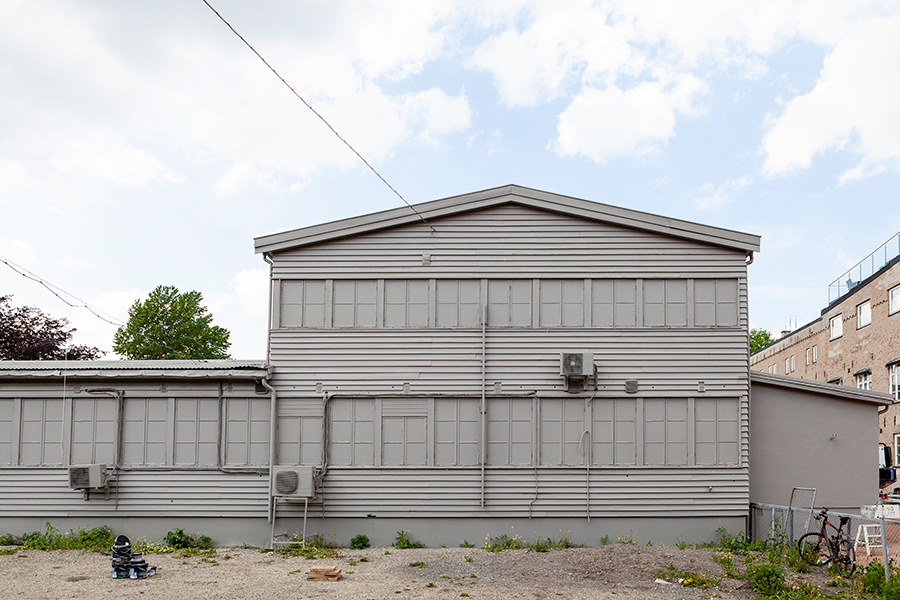We’re All Tired of Biennials – So What Comes Next? Part 1: A Report on the Inaugural Edition of osloBIENNALEN
The first in a series looking at alternative approaches to biennials
The first in a series looking at alternative approaches to biennials

Oil money can’t buy happiness for art, but it can buy therapy. A few years ago, the city of Oslo asked for a biennial. But, first, it asked what that might look like: who wants another exhibition-cum-spaceship touching down to sap public funding for a PR spectacle? The result of that consultation, which opened in late May, is osloBIENNALEN. The event is not a biennial at all, but an ‘evolving five-year programme of art in public space’ that will unfold between now and 2024. Besides signalling a certain scale, the name is there to deconstruct and mend an increasingly fraught template.
From 2015 to 2017, curators Eva González-Sancho Bodero and Per Gunnar Eeg-Tverbakk led the Oslo Pilot, an investigation of the biennial format, commissioned by the city, to form the basis of a new biennial for public art. In the publication that came out of the project, they asked: is it possible to make a biennial more like a question?

osloBIENNALEN is that. Normally, when a biennial opens, it’s the end of something. But, after the first set of 16 projects for osloBIENNALEN launched in May this year, curatorial assistant Håkon Lillegraven told me: ‘Nothing about our work changed, only now our process is public.’ This event is as much about production as it is about display.
osloBIENNALEN is funded mostly by resources initially invested in the municipality’s built environment and then earmarked for art. The biennale has syphoned off production budgets in surprising directions: 60 studios have been made available for artists to use in the organization’s building in central Oslo, whether they participate in the biennial or not. Further, Lisa Tan’s project, Other Artists (all works 2019), involved renovating the toilets in that building as part of a reflection on what artists share, and how to make an infrastructure of it. A prominent organ in Oslo City Hall was revealed as ornamental, and finally made partly functional, to accommodate Øystein Wyller Odden’s Power Line Hum. In the grand hall of Norway’s most famous landmark, for 15 minutes before closing to the public, the monotonous buzz of 50HZ electricity seems to push people out of the building, like oxygen from a room.

The strength of this experiment lies in what it manages to give back to the city and its art scene, both materially and infrastructurally. Its intellectual and artistic payoff will come more slowly, as osloBIENNALEN’s mostly time-based works confound assumptions about what it means for a work of art to be public, and their severe duration (five years!) makes an impact beyond the biennial format’s usual scope. Carole Douillard’s performance-sculpture The Viewers, for instance, places a static constellation of people in one of a series of carefully chosen locations to stare at passers-by for two hours. Among these locations is Y-blokka, one of the few 20th-century buildings in central Oslo to rival the City Hall in architectural significance. The building was scheduled for heritage status just before it was damaged in the terrorist attacks of 22 July 2011 but, by the end of the biennial’s first edition, will have been demolished. Douillard’s work gives significance to this place and others. It stands as an example of how osloBIENNALEN documents changes in the urban fabric, and provides moments of self-conscious reflection on the nature of time, consumption and agency in public space. It does this not as a gesture of site-specificity, as biennial jargon would have it, but with self-evidence through the sheer scope of its commitment.

Another highlight, Gaylen Gerber’s Support,perfectly illustrates the biennial’s wallflower logic. A nondescript wooden building, erected during the German occupation, has been painted grey: the drain pipes, the windows, even a lightbulb – all of it. The structure is a ghost, though it’s never been more noticeable. Breathlessly brilliant, the work turns disappearance into appearance for a biennial that’s not a biennial. If Oslo has taken the biennial format to therapy, the question is whether it will come out on the other side of five years too unrecognizable to bear the same name. Will the first edition of osloBIENNALEN also be the last?
osloBIENNALEN opened in May and is currently on view to the public. A second set of projects will open in October 2019.
Main image: Carole Douillard, The Viewers, 2019, performance documentation. Courtesy: the artist and osloBIENNALEN; photograph: Niklar Hart






















